The issue of Bro. Ward’s series of handbooks cannot fail to accomplish its main object, which is to lead not only juniors, but also those well versed in the ritual, to mark, learn and inwardly digest the significance of the ceremonies, which when properly understood, causes our jewels and emblems to glow with an inner light which infinitely enhances their beauty.
– the Hon. Sir John A. Cockburn
Introduction Excerpt
Chapter I – The Opening of the First Degree
The Worshipful Master (W.M.) calls the brethren together with one knock so as to remind them that the body must be prepared to obey the higher faculties, for if it is not, no spiritual progress is possible.
The first question and answer of the Junior Warden (J.W.) indicate this quite clearly, for the J.W. represents the body and so he satisfies himself that man’s body is on guard against outside influences.
The Senior Warden (S.W.), representing the Soul, next proves that all present have made some progress towards the light.
![]()
it takes seven to make a perfect lodge
It is only when this has been achieved that any real advancement becomes possible, and only those who have started can help those who still remain in spiritual darkness.
The next series of questions indicates that Man has a seven-fold nature.
The Ancient Egyptians held this view , and it is endorsed in Masonry by the fact that it takes seven to make a perfect lodge.
There is also, no doubt, an astrological reference to the seven planets and a connection with stellar worship, but as our system is mainly solar, it is almost impossible to give a logical planetary interpretation to the seven who form a lodge, or to the seven officers.
In short, the planetary symbolism has become disorganised by the stress laid on the solar aspect of the three principal officers who rule a lodge.
Moreover, the predominance of the solar aspect has emphasised the triune nature of man, and symbolises it in these officers.
Thus it will be seen that too much stress must not be laid on the planets, as represented by the seven officers, and a passing reference to the fact that it is still remembered in the number seven is all that can be logically maintained.
Similarly there is merely a hint of the seven-fold nature of man.
If ours were a stellar system, then clearly the Tyler would represent the body, the divine spark would be represented by the W.M. , the various officers between would symbolise the various sub-divisions of the non-materials parts of man, such as his astral body, his intellectual faculties, and so forth.
Since, however, our system is solar in the main, we should continue to interpret our symbols from that aspect, making but passing reference to stellar influences when they occur.
The duties of the Tyler are considered elsewhere, so we will pass to the Inner Guard (I.G.).
Although in some popular workings he and the other two subordinate officers are not allowed to speak for themselves, the Wardens doing this work, in many other rituals they are allowed to answer the W.M. direct.
The I.G. stands for the power which permits the Soul to enter flesh at any given moment.
The Soul may desire to become incarnate, but unless its time has come it is turned back at the threshold, and even if it forces itself into birth it is cut short.
Entry into life is not an accident, but ordained of God, Who works through His spiritual as well as through His human agents.
Those who saw Maeterlinck’s play, “The Blue Bird,” will remember that the same idea is dealt with in one of the scenes.
Spiritually, the I.G. represents the warning which must be given to those who attempt, without due caution, to probe into the Mysteries of God.
They must neither rush forward hastily, nor, having once started, withdraw suddenly; for, if they do, dire evil will befall.
This warning all the Mysteries gave, and it is certain that those who dabble in the so-called occult run grave risks unless they use the utmost caution.
Hence it is absolutely essential that the candidate should be properly prepared before he starts on his quest.
The J.D. represents the physical means by which the Soul, represented by the S.W., passes on the inspirations received from the Spirit, the W.M., to the material world.
In this sense therefore he represents intelligence, and the five senses of man, whereas the S.D. stands for intuition, whereby the Soul obtains its inspiration from the Divine.
In the ancient operative days these officers no doubt had a practical use, the S.D. being the personal messenger of the Master, who took messages to the S.W., not merely when in Lodge, but when he was at a distance, employed on his task, or possibly when he was resting from his labours.
In like manner the S.W.’s deacon was sent by him to find the J.W.
The J.W. describes his position in Labour and indicates quite clearly that he represents the Sun at noon.
From the operative point of view it must be remembered that Noon has always been, and still is, a workingman’s dinner hour, hence the special duty of the J.W. ; but in the spiritual sense, since he stands for the body, it is natural that he should have charge over the body’s needs.
As he also represents the preservative side of God, his interest in the physical well-being of man is appropriate.

Vishnu is known as “The Preserver” within the Trimurti, the Hindu trinity that includes Brahma and Shiva
IMAGE LINKED: wikimedia Attribution 4.0 International (CC BY 4.0)
With this in mind the Fellow Craft. will realise the significance of the Password., and its connection with Corn and Water, which are the emblems of the God of Vegetation in the more primitive rites.
When men evolved, and the solar system of religion developed, the God of Vegetation became the Preserver.
This characteristic of the J.W. is emphasised by the uprightness of his plumb, which latter reminds us of water which falls from heaven, and of the cast marks of Vishnu in India.
This aspect of the J.W., as representing the Preserver , is carefully maintained throughout the whole of the three degrees and must never be forgotten.
In like manner, the fact that he stands for the body is also maintained throughout.
Bearing this in mind , we shall perceive the significance of the fact that the Architect of King Solomon’s Temple was the J.W. Finally, bread and water represent the bare necessities, without which mortal life cannot be preserved.
Luxuries, which are obtained when we have acquired worldly possessions, i.e., wealth, lead to the death of the soul, and even of the body, unless employed with the greatest caution.
Some masons claim that the J.W. originally sat in the North to mark the Sun at noon, meaning to see, or point out, that it had reached the midheavens.
Honestly, I can find no real evidence in support of this view, which likewise places the W.M. in the West and the S.W. in the East.
It is due, in my opinion, to a complete misunderstanding of the use of the words “to mark.”
This phrase implies that the J.W. is placed on a certain spot to mark the position of the Sun at noon, and not that ‘he may see it.
In a closed-in building, such as a lodge room was, it would be desirable to mark the three positions of the Sun, for the candidate has to pass through each point in turn, and these three officers, who represent the Sun in its three aspects, would naturally sit in the positions in use in a speculative lodge.
Any arguments adduced from the rituals of the modern Operative Lodges are vitiated by two facts-
(l) we have no evidence that this peculiarity is really old (it may be due to Stretton’s inventive mind)
(2) the Operatives, if old, would be descended from the Guild Masons and not from the Freemasons ; and this might be a peculiarity of theirs, or deliberately adopted so as to differentiate them from the Freemasons.
That the Guild Masons and Freemasons were quite distinct has been proved as far back as 1913, and the fact is gone into in my other book, “Freemasonry and the Ancient Gods.” (linked below)
That the Operatives are not descended direct from the Mediaeval Freemasons is shown by the fact that they have entirely different signs from our own.
Thus we need not discuss further the question as to whether the J.W. should be in the North or South.
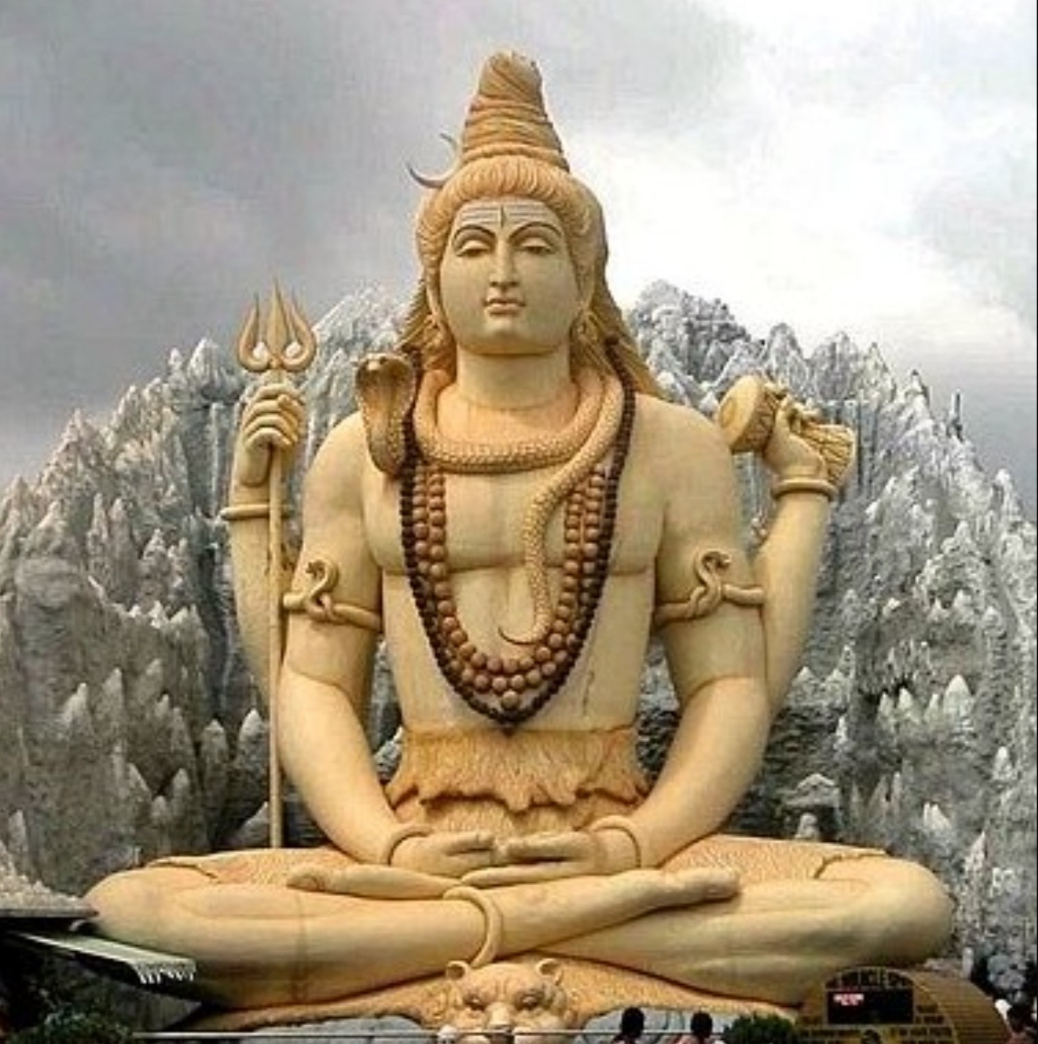
Shiva – God of Destruction
IMAGE LINKED: wikimedia Attribution 4.0 International (CC BY 4.0)
The S.W., as he indicates in his reply to the W.M., represents the Sun in its setting, and so the Destructive Side of the Deity, or Shiva.
He also stands for the Soul. Shiva shall close not only our mortal life, but Time itself.
But I have dealt with this side of the S.W. very fully elsewhere.
It should be noted, however, that the S.W. is associated with level and horizontal lines , and not with perpendiculars, and here again he follows the Hindu system, for Shiva’s caste mark is two or more parallel lines.
The S.W., as he indicates in his reply to the W.M., represents the Sun in its setting, and so the Destructive Side of the Deity, or Shiva.
He also stands for the Soul. Shiva shall close not only our mortal life, but Time itself. But I have dealt with this side of the S.W. very fully elsewhere.
It should be noted, however, that the S.W. is associated with level and horizontal lines , and not with perpendiculars, and here again he follows the Hindu system, for Shiva’s caste mark is two or more parallel lines.
As the Great Leveller this is most natural, and it reminds us that in the sight of God all souls are equal, even though in mortal life their stations may appear to differ.
Shiva is associated with the element of Fire, whereas Vishnu is associated with Water, and as we see that great care has been taken to maintain the connection between the J.W. and Water, so we find that with us the S.W. is similarly associated with Fire, though perhaps less obviously.
Firstly, his level is of a triangular form with the point upward, the world-wide symbol for Fire.
Again, the S.W. ‘s Password has hidden within it the same idea.
A smith who works in metals can only do so by the help of fire, and in one ritual this fact is stressed.
Thus metals come out from the dark earth, and the Sun sinks in the West into darkness and the grave, as does man.
But, by means of fire, man obtains wealth from the metals hidden in the earth, and in like manner the Soul of Man rises refined and purified from the grave by means of the divine fire within.
Moreover, one cannot ignore the fact that there is here a hint of the necessity of the purging fire of remorse to cleanse away our sins.
The S. W. is the Soul, the link between mortal life and the Divine Spark , but he acts on instructions from the Spirit; in other words, it is only when God decrees our death that the Soul departs from the body.
The W.M. represents, as his words indicate, the creative side of God and the Divine Spirit in Man.
He sets us to work on earth, but delegates to another the task of calling us back whence we came.

He represents the male aspect of the Deity, as is shown by the tau crosses, called levels, on his apron, and by his use of the gavel, which represents the same emblem.
The Tau Cross is, of course, a phallic symbol and stands for the male and creative aspect in Man.
As the three principal officers represent the Sun (a masculine planet) in various phases, it is natural that they should all wield the gavel, but the two wardens are less essentially male than the W.M., as is indicated by the fact that they do not have the tau cross or Master’s level on their aprons.
The Spirit, being active, is male; whereas both soul and body, being more or less passive, are female.
The feminine side of the S.W. or Soul is deliberately emphasised later-in the first degree-by a reference to the Moon, a feminine planet, the emblem of the Soul and of the psychic nature in man.
Nor can we ignore the fact that the West is known as the feminine quarter of the heavens, whereas the East is the masculine; it is also worth noticing that Shiva is often depicted with the moon.
Finally, before declaring the lodge open, the W.M. offers up a prayer, thereby reminding us that the Divine Spark in Man, or the Spirit, must turn to the Source of All for aid if it would control body and soul.
The three knocks, as distinct from the one knock with which the proceedings started, indicate that the members are about to work for the union and advancement of body, soul and spirit, and not for the body only.
But the way in which the three knocks are given show that, as yet, there is no unity between the three elements which constitute Man.
Article by: J. S. M. Ward
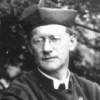
John Sebastian Marlow Ward (22 December 1885 – 1949) was an English author who published widely on the subject of Freemasonry and esotericism.
He was born in what is now Belize. In 1908 he graduated from the University of Cambridge with honours in history, following in the footsteps of his father, Herbert Ward who had also studied in history before entering the priesthood in the Anglican Church, as his father had done before him.
John Ward became a prolific and sometimes controversial writer on a wide variety of topics. He made contributions to the history of Freemasonry and other secret societies.
He was also a psychic medium or spiritualist, a prominent churchman and is still seen by some as a mystic and modern-day prophet.
Recent Articles: J.S.M Ward EAF Handbook

Book Review - The EA, FC, MM Handbooks
Essential reading for every Entered Apprentice, Fellowcraft, and Master Mason - these seminal books by J.S.M Ward are what every Mason needs!
more....
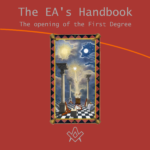 The Entered Apprentices Handbook P1 Chapter 1 - An interpretation of the first degree, the meaning of the preparation, symbolism, ritual and signs. Chapter 1, The opening of the First Degree |
 The Entered Apprentices Handbook P2 Chapter 2 - The Tyler or Outer Guard. The first thing that greets the eyes of the aspirant to our Order standing in front of the door with a drawn sword in his hand. |
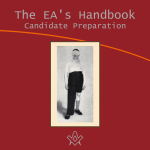 The Entered Apprentices Handbook P3 Chapter 3 - the Candidate being prepared by the Tyler. What we now have is a system by which the parts which have to be bare are made bare. |
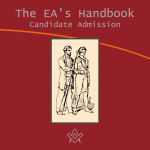 The Entered Apprentices Handbook P4 Chapter 4 - The candidate's admission into the lodge, is received on a sharp instrument. This signifies many things, one idea lying within the other. |
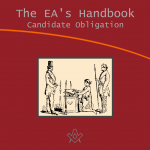 The Entered Apprentices Handbook P5 Chapter 5 - In all the ancient mysteries a candidate obligation was exacted to secure the secret teachings given in these mysteries which disclosed an inner meaning. |
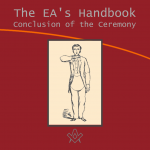 The Entered Apprentices Handbook P6 Chapter 6 - Having taken the first regular step the Candidate is given the Sign. This he is told refers to the Penalty of his Obligation, and no doubt it does, but it also seems to refer to something much more startling. |
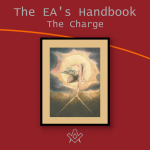 The Entered Apprentices Handbook P7 Chapter 7 - The candidate receives the charge, the first significant point is the phrase "Ancient, no doubt it is, as having subsisted from time immemorial". |
 In the second volume we are dealing with the degree of Life, in its broadest sense, just as in the first degree we were dealing with the degree of birth, and as life in reality is educational for the Soul, we are not surprised to find that throughout the whole degree the subject of education is more or less stressed. read the full series … |
 The third degree in Freemasonry is termed the Sublime Degree and the title is truly justified. Even in its exoteric aspect its simple, yet dramatic, power must leave a lasting impression on the mind of every Cand.. But its esoteric meaning contains some of the most profound spiritual instruction which it is possible to obtain to-day. read the full series … |
masonic knowledge
to be a better citizen of the world
share the square with two brothers

click image to open email app on mobile device








